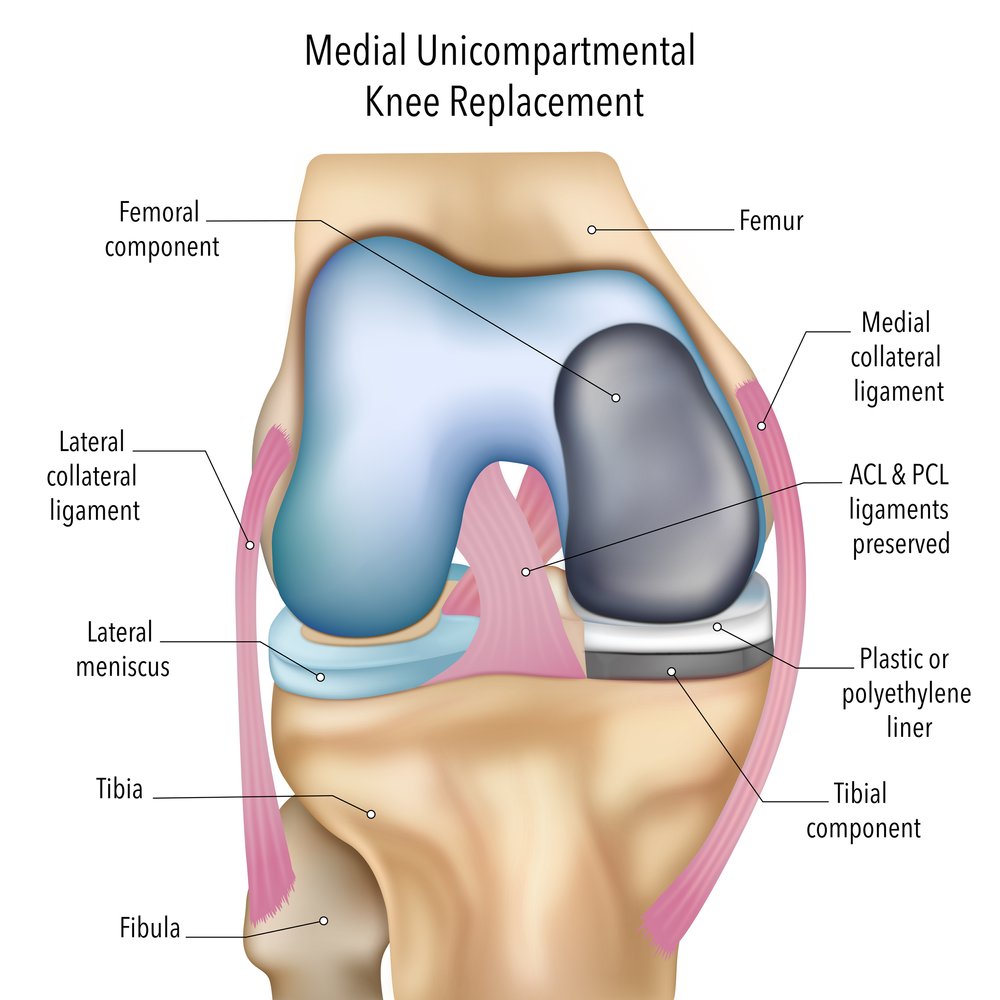
Knee Osteoarthritis Surgery
Treatment is tailored to each patient and often begins with non-surgical options, progressing to surgical solutions if symptoms become more severe or persistent.

What Is Knee Osteoarthritis?
Knee osteoarthritis is a common condition that can affect quality of life by causing pain, stiffness, and reduced mobility. Treatment is tailored to each patient and often begins with non-surgical options, progressing to surgical solutions if symptoms become more severe or persistent.
-
Non-Surgical (Conservative) Management
In the early stages, knee osteoarthritis is often managed successfully without surgery. These treatments aim to reduce pain, improve joint function, and slow progression of the disease.
- Weight Management Reducing excess body weight helps relieve stress on the knee joint. Even small amounts of weight loss can make a significant difference in reducing pain and slowing joint damage.
- Physiotherapy Strengthening the muscles around the knee—particularly the quadriceps and hamstrings—helps to stabilise the joint and improve function. A tailored physiotherapy programme is often a key part of long-term management.
- Medications Non-steroidal anti-inflammatory drugs (NSAIDs) are commonly used to reduce inflammation and manage pain. They may be taken orally or applied topically, depending on the severity of symptoms.
- Joint Injections In some cases, injections can offer additional relief:
Corticosteroids Provide short-term pain relief, particularly during flare-ups. However, repeated use may weaken cartilage over time.
Hyaluronic Acid acts as a lubricant within the joint, helping to ease movement and reduce discomfort.
Platelet-Rich Plasma (PRP) Uses components of the patient’s own blood to promote healing and reduce inflammation. This is an emerging treatment with encouraging early results.- Bracing and Assistive Devices Supportive devices such as unloader braces can shift weight away from the affected area of the knee, offering relief in cases of compartmental osteoarthritis. Walking aids may also help reduce pressure on the joint during daily activities.
-
Surgical Treatment Options
When non-operative treatments no longer provide sufficient relief, surgery may be considered. The two main options are partial knee replacement and total knee replacement, with advanced techniques like robotic-assisted and patient-specific implants increasingly available.
-
Partial Knee Replacement (Unicompartmental Knee Arthroplasty - UKA)
This procedure is suitable for patients with osteoarthritis limited to one part of the knee. Benefits include:
- Smaller incisions and less invasive surgery
- Faster recovery and a more natural knee feel
- Lower risk of complications compared to full replacement
However, this option is not suitable for all patients, and some may require further surgery in the future if arthritis spreads to other parts of the knee. -
Total Knee Replacement (Total Knee Arthroplasty - TKA)
This procedure is recommended for more widespread arthritis involving multiple areas of the knee. It offers:
- Long-lasting pain relief and improved mobility
- High success rates with implants lasting 15–20 years in most cases
Recovery can take several months, and risks include stiffness, infection, or blood clots, although these complications are relatively rare. -
Patient-Specific Knee Replacement
Using pre-operative imaging (CT or MRI), a custom implant is created to match the patient’s anatomy. This approach can:
- Improve implant fit and joint alignment
- Reduce surgical trauma
- Potentially lead to faster recovery
Long-term outcomes are still being studied, but early data is promising. -
Robotic-Assisted Knee Replacement
This cutting-edge approach uses robotic systems to guide the surgeon in placing the implant with extreme precision. Benefits may include:
- Greater accuracy and alignment
- Less soft tissue damage
- Quicker recovery and less post-operative pain
Though robotic surgery may involve higher costs, it may improve long-term function and implant durability.
-
Post-Surgical Recovery and Rehabilitation
Partial Knee Replacement: Patients may walk within a day and return to normal activities in 4-6 weeks.
Total Knee Replacement: Recovery typically takes 3-6 months, with structured physiotherapy being essential for optimal results.
Patient-Specific and Robotic-Assisted Replacements: Generally follow similar recovery timelines but may offer enhanced precision and potentially faster rehabilitation.
Choosing between non-operative management, partial knee replacement, total knee replacement, or advanced surgical techniques depends on factors such as the severity of arthritis, age, activity level, and patient preference. A personalized treatment approach should be discussed with a knee specialist to determine the most appropriate option.

